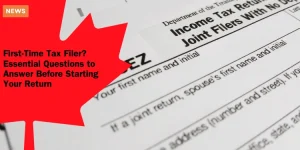Complete Guide: How to Handle Your New 1099-K Form for Digital Transactions
Anúncios
Understanding the New 1099-K Requirements
The tax landscape is changing considerably for those engaging in digital transactions.
For the 2024 tax year, the threshold for receiving a 1099-K form has dropped significantly to $5,000.
Anúncios
This means that individuals who might not have previously received this form will now need to take note.
Lower Threshold for 1099-K Issuance
Previously, the 1099-K was only issued to those with more than $20,000 in transactions and over 200 individual transactions.
Anúncios
Now, the bar has been lowered drastically, capturing a broader range of users.
Specifically, payment apps like PayPal or Venmo, online marketplaces, and payment card companies must issue a 1099-K when business transactions exceed $5,000 in total for the year.
Broader Impact on Digital Transactions
A significant impact of this change is that many more taxpayers will receive a 1099-K, even if they are casual sellers or occasional users of payment platforms.
For instance:
- 💳 Individuals selling items online that surpass the $5,000 limit.
- 💳 People reselling high-value items like concert tickets or sports tickets.
- 💳 Users of digital payment services who handle their financial transactions through these platforms.
This shift means that many more individuals will need to understand and manage this form during their tax preparations.
 Digital transfers will be affected
Digital transfers will be affected
IRS and Compliance
The IRS is closely monitoring these digital and online transactions to ensure compliance and accurate reporting of income.
As a taxpayer, it’s crucial to understand that just because a 1099-K is issued, it does not automatically mean all reported transactions are taxable.
Sellers must meticulously track original purchase costs and related expenses to report correct taxable income and avoid overpaying taxes.
Stay Informed
Keeping informed about these changes and preparing accordingly can save you significant trouble during tax season.
Being proactive about understanding the new 1099-K requirements will help you navigate the complexities of your tax filings more seamlessly.
Keep in mind to meticulously track your transactions and consult with a tax professional if you have any uncertainties.
This will ensure compliance and alleviate any stress related to these new reporting requirements.
Who Will Receive a 1099-K?
The lowering of the threshold for 1099-K issuance to $5,000 for the 2024 tax year has broadened the spectrum of people who will be receiving this form.
This change impacts numerous individuals, from casual sellers to gig economy workers.
Understanding who is affected is crucial, and maintaining accurate records will help manage any tax implications.
Online Sellers
Individuals who sold items online and exceeded $5,000 in total transactions will now receive a 1099-K.
The high volume of online reselling has made this a common scenario.
For example, if you cleared out your garage or flipped items on platforms like eBay or Facebook Marketplace and exceeded the $5,000 mark, expect a 1099-K.
Selling personal items at a loss won’t affect your taxes, but profitable sales will.
Sellers of High-Value Items
Those who resell high-demand items, such as concert or sports tickets, are also in the spotlight.
Reselling Taylor Swift Eras Tour tickets at elevated prices or selling sought-after football tickets, such as those for Detroit Lions or Philadelphia Eagles games, can quickly surpass the $5,000 threshold.
It’s important to report the gains accurately to the IRS, acknowledging the threshold for issuing a 1099-K according to the.
Users of Payment Platforms
If you’re using digital payment services like PayPal, Venmo, or similar apps, and your transactions totaled over $5,000 for 2024, you will receive a 1099-K.
This includes not only sellers but also those who might use these platforms to receive payments for small businesses or gig work.
These platforms are now required to track and report transactions better than ever before.
As changes unfold, it’s crucial to understand how these shifts can affect you and stay updated on the reporting requirements. Keeping meticulous records of your transactions will ensure clarity when tax season arrives.
Future Changes and Implementation
The threshold for receiving a 1099-K is set to decrease further to $600 by 2026.
This gradual reduction by the IRS is part of a phased approach, designed to allow taxpayers time to adjust to the new reporting requirements.
This phased strategy aims to mitigate the administrative challenges the IRS expects to face as millions of additional 1099-K forms are issued.
Legislative Landscape
It’s important to recognize the potential for legislative changes that could impact these thresholds.
Some lawmakers have argued against the drastic reduction in thresholds, suggesting that it could overburden taxpayers and the IRS alike.
As we approach the implementation dates, it’s possible that Congress may revisit and potentially amend these rules to ease the reporting burden.
Understanding these potential changes and staying informed about legislative developments is crucial for taxpayers to ensure compliance and avoid any unexpected surprises on their tax returns.
The next critical step is grasping the difference between taxable and non-taxable transactions, an essential aspect of handling the new reporting requirements efficiently.
Understanding Taxable vs. Non-Taxable Transactions
Dealing with the new 1099-K form can be daunting, but differentiating between taxable and non-taxable transactions is a key step in managing these new reporting requirements.
Taxable vs. Non-Taxable Transactions
Not every transaction reported on your 1099-K is taxable.
Personal transfers and reimbursements are generally not taxable.
For instance, if you receive money from a roommate for shared rent or get reimbursed by a friend for dinner, these amounts are non-taxable.
Reporting Net Gains
Only net gains are subject to taxation, not gross receipts.
This means you shouldn’t panic if the form shows a large total.
For example, if you sold concert tickets for $900 that you initially bought for $500, your taxable gain is $400.
Remember, personal losses, such as selling a used item at a loss, are not deductible.
Keeping Accurate Records
To ensure accurate profit calculation, keep detailed records of your original purchase costs and any expenses.
This will help you determine your net gain accurately and ensure you only pay taxes on the correct amount.
Being mindful of these nuances can simplify the process and prevent overpaying or underreporting on your taxes.
Understanding the details of taxable versus non-taxable transactions also makes it easier to handle future changes and implementations.
Maintaining accurate records and staying informed about ongoing changes will help you manage your tax liability effectively.
Calculating Your Tax Liability
Understanding how to calculate your tax liability with the new 1099-K requirements is essential to avoid overpaying taxes.
Here’s a breakdown of the key steps and considerations:
Track Original Purchase Costs and Expenses
To accurately determine your profit, it’s crucial to maintain detailed records of your original purchase costs and any related expenses.
For instance, if you buy concert tickets for $500 and resell them for $900, your taxable gain is $400.
This means you only owe taxes on the $400 profit, not the full $900 sale amount.
Keeping track of all your original purchase receipts and expenses can save you money come tax season.
Losses on Personal Items
It’s important to note that losses incurred from selling personal items are not tax-deductible.
For example, if you sold a designer handbag for $200 that you originally purchased for $500, you don’t get a tax break on the $300 loss.
Only gains are taxable, so understanding this distinction helps prevent unnecessary tax calculations for losses which aren’t deductible.
Keep Detailed Records
Maintaining accurate and detailed records is imperative.
This includes keeping receipts and documentation for:
- 💳 Purchases and sales
- 💳 Any expenses related to your sales, such as shipping costs or listing fees
- 💳 Non-taxable transactions, like personal reimbursements through payment platforms
By organizing these records, you can ensure you only pay taxes on the appropriate amounts, and it will be easier to reconcile your 1099-K information when preparing your tax return.
Understanding these elements helps to determine your true taxable income instead of the gross amounts reported on a 1099-K.
Now that you’ve learned how to calculate your taxable income accurately, it’s time to ensure you report 1099-K information correctly on your tax return.
How to Report 1099-K Information
New Section on Schedule 1 for Reporting Incorrect 1099-K Information
Receiving a 1099-K can be stressful, especially when the information it contains might be incorrect or include transactions that aren’t taxable.
Fortunately, the IRS has introduced a new section at the top of Schedule 1 specifically for handling these inaccuracies.
This area, before “Part 1: Additional Income,” allows you to report amounts included in error or for personal items sold at a loss.
Keep in mind that third-party payment platforms, like PayPal and Venmo, may not distinguish between personal transfers and taxable transactions.
For example, if your roommate reimburses you for rent via a payment provider, this should be reported as non-taxable.
How to Reconcile Personal Items Sold at a Loss
If the 1099-K shows a transaction where you sold a personal item at a loss, you need to reconcile this on your tax return.
Remember, losses on personal items are not tax-deductible.
For instance, if you sold a used laptop for $300 after initially purchasing it for $800, although you lost money, this sale isn’t deductible .
To correctly reconcile these losses:
- Report the amount received from the sale.
- Indicate that it was a personal loss to avoid it being considered taxable income.
Importance of Not Ignoring the Form Even If Transactions Aren’t Taxable
Ignoring a 1099-K is a big no-no.
The IRS receives this form as well, and they will assume the reported amounts are taxable unless you clarify otherwise.
If you disregard it, you might receive a follow-up letter, adding more stress to your plate.
Be proactive:
- 💳 Review the 1099-K carefully.
- 💳 Use the new Schedule 1 section to adjust any incorrect data.
- 💳 File your tax return ensuring all reported amounts are accurate and justified.
Staying on top of your 1099-K can save you headaches down the road.
Keeping organized records and understanding what needs to be reported will make filing your taxes less of a chore.







